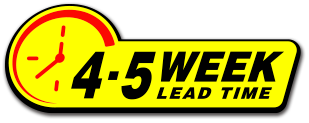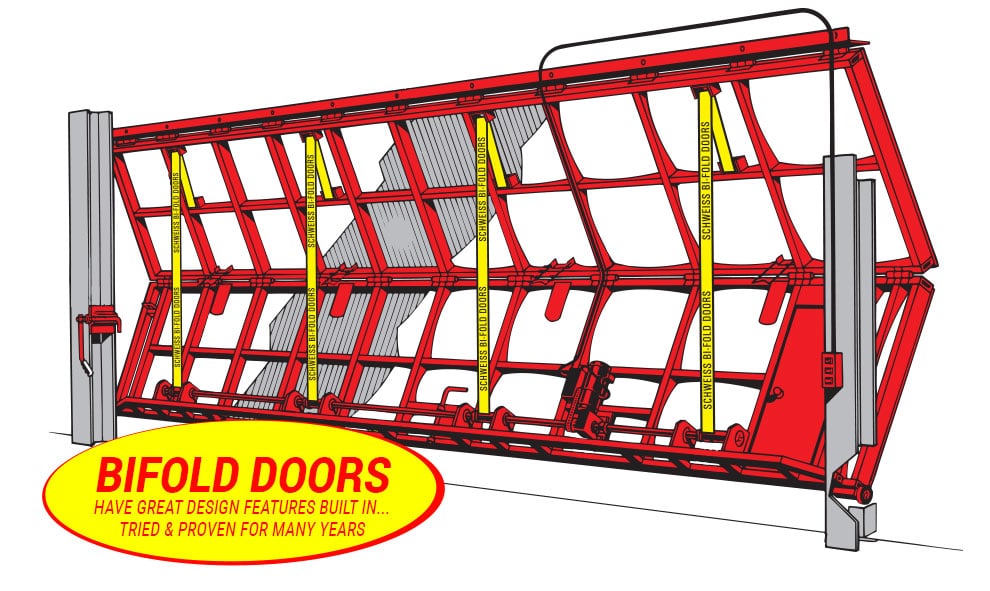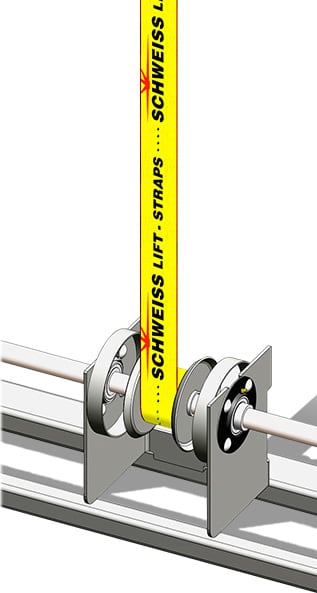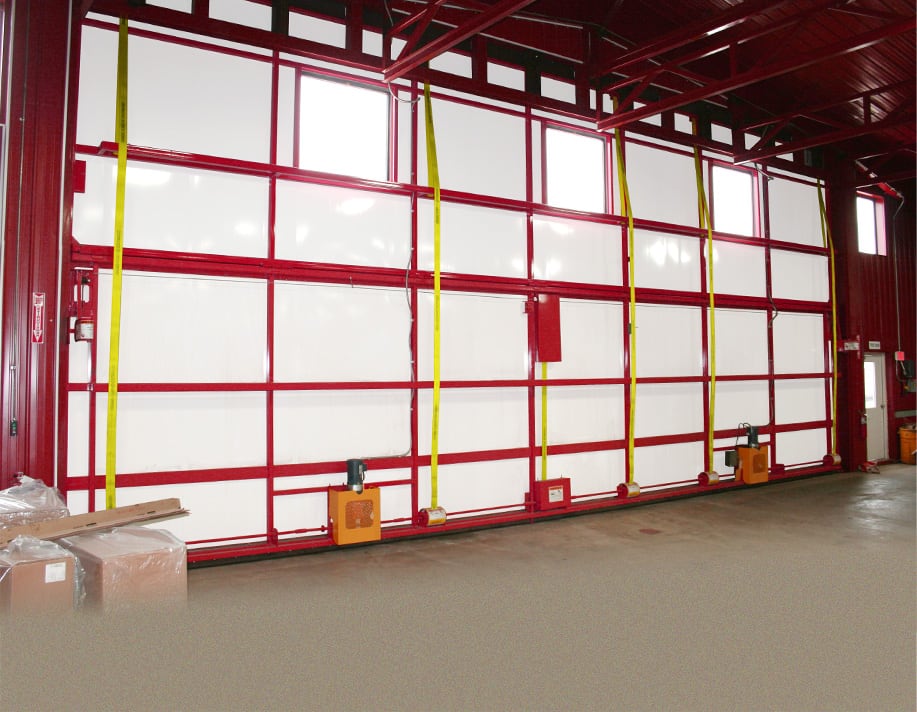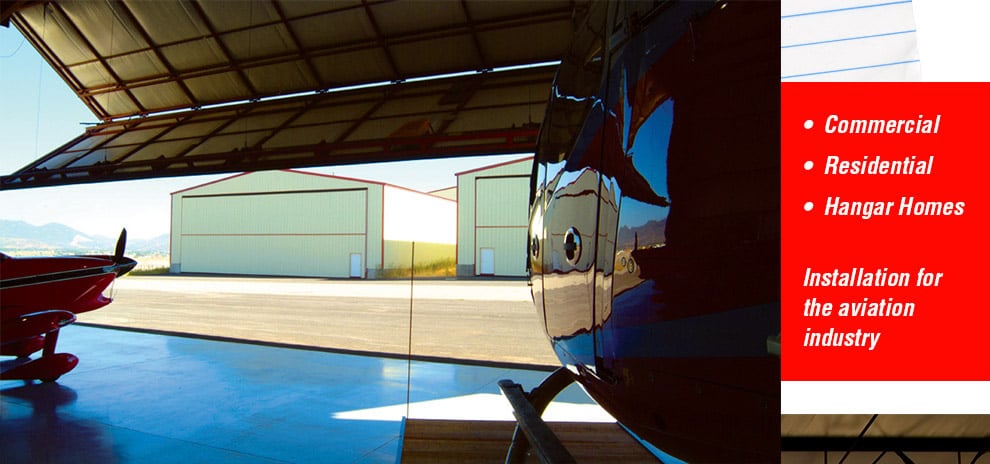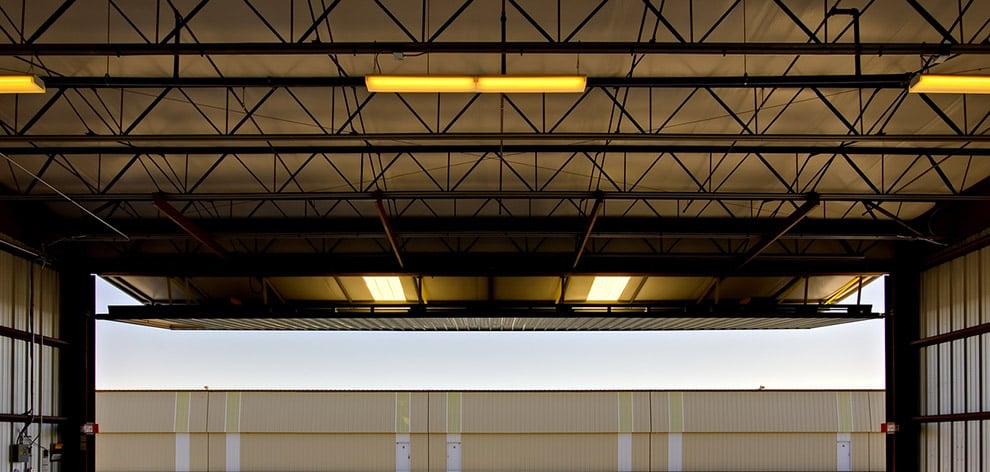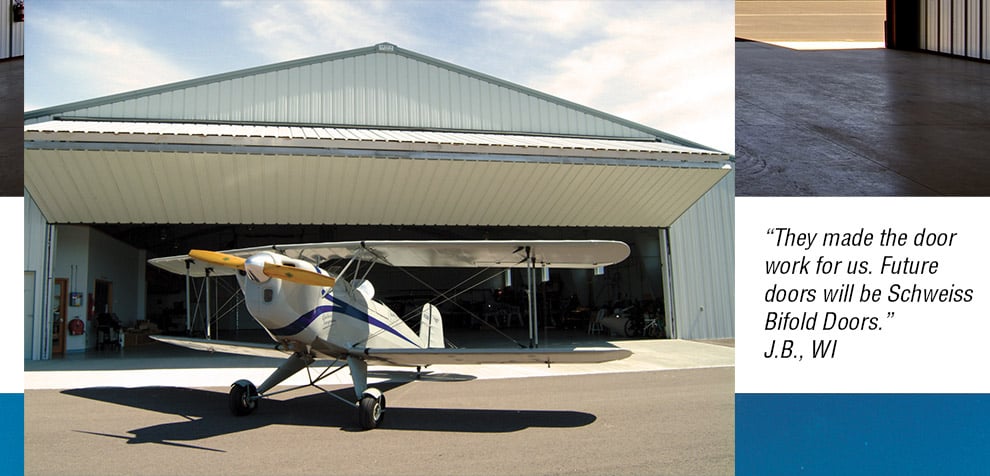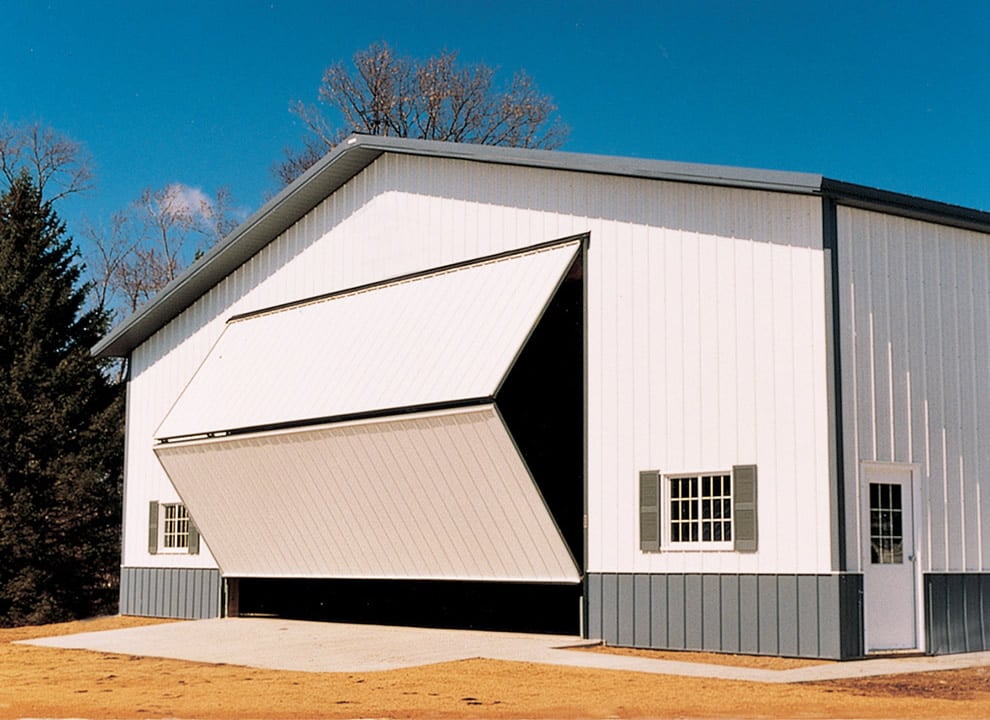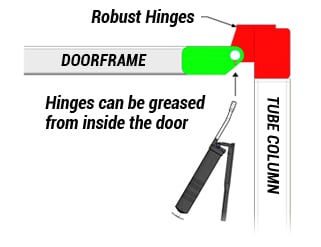Some manufacturers are selling Outdated Motorized Latches
Motor Latch . . . Not a Sure Latch!
- Clutters Up The Door
- Not a Sure Latch
- Too Many Parts

Additional Motor Required
Others offer an additional motor to power the latches that operates mechanical linkage rods connected to metal flippers to secure the door closed. This motor needs to be reliable and durable, as any malfunction can compromise the door's security or functionality.

Hit And Miss
Sometimes it latches, Other times it misses.
Involves Numerous Parts
Motorized latching system involves numerous parts, increasing the potential for future issues.
Too Many Parts
Connect the motor to the latches, acting as the physical link that translates the motor's rotational or linear movement into the action needed to secure the door.
Metal Flippers / Side Catches
These are the components directly involved in engaging or disengaging the latch. They need to align precisely with the counter latch or strike plate to ensure a secure closure.
Complexity... And Potential Issues
More components inherently mean more potential points of failure. The system could be sensitive to minor misalignments, wear, or external factors like wind or snow, as mentioned. Debris or obstruction by snow, for example, could prevent the door from latching properly.
Clutters Up The Interior Of The Bifold Frame
Motorized latching system and mechanical linkage rods clutter up the interior of the bifold door frame, especially when the customers want windows in the bifold door frame. Also when it comes to line, the inside of the door frame makes it clumsy to sheet around the linkage rod for the latches.
Motorized Latches Are Slower
You're dealing with 2 separate motors. To unlatch the door, the latch motor must engage first and go through the unlatching cycle. After the door unlatches, the drive line motor must start up and open the door. All this takes more time. It's a 2 step process that takes time, and time is money.
Not a Sure Latch
You're having to rely on its own separate motor and an extra electrical and moving parts of the linkage rods and flipper to secure the door against the building structure. Many things can be out of adjustment and at any time, that causes issues, not allowing your door pull back tight onto the building structure - too many variables!
Try latching the door in windy conditions... HIT AND MISS - Sometimes it latches, other times it misses.
Question...
It raises questions as to why some offer free motorized autolatches? It would make more sense to figure out a way to do away with the extra motor and a less complicated latching system!
